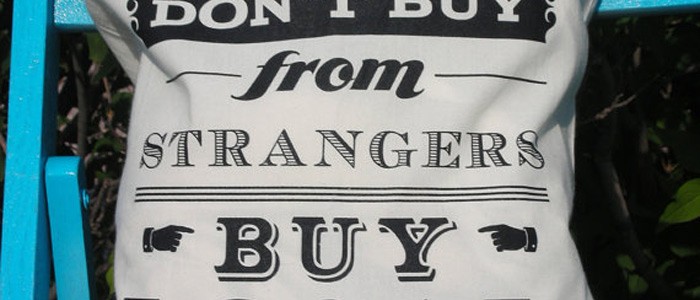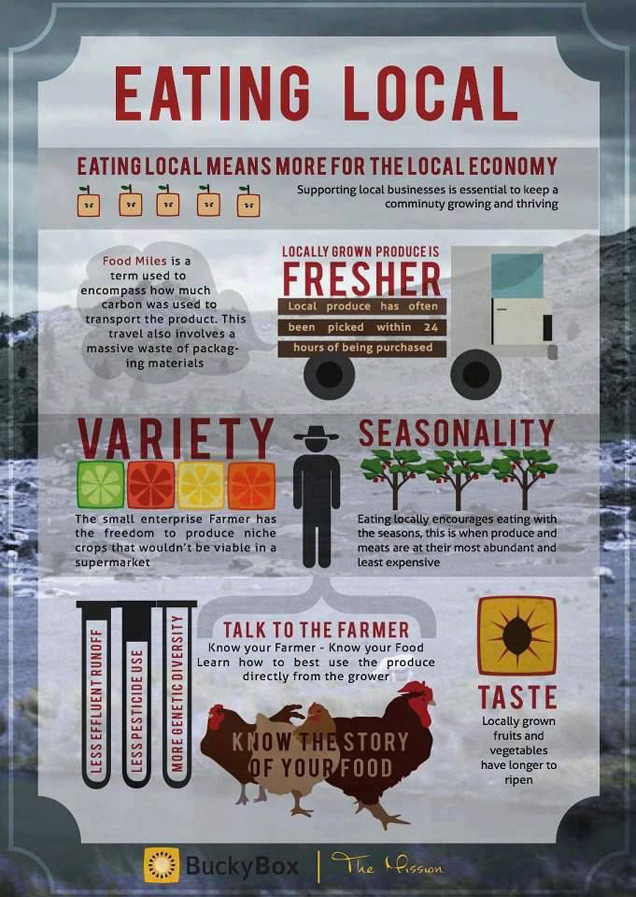The Eat Local Challenge is simple, eat as local as you can. The original Eat Local Challenge started in 2007 and is based on only eating food that comes from within a 250 mile radius of the Salt Lake Valley. Too much commitment? What about eating local food for one meal? Whether for a date night at a restaurant or cooking a nice meal at home, there are some great places to get delicious local food and support your neighborhood farmers.
If you’re afraid that eating local is too expensive vs. swinging by Walmart, community supported agriculture projects (CSAs) allow members to pay a reasonable fee to help sustain the farm, and receive fresh local produce in return. Click here for another list of CSAs »
Eating local food has a long list of benefits including freshness, higher nutritional value, better taste, and supporting the local economy.
Locally grown food is full of flavor. When grown locally, the crops are picked at their peak of ripeness versus being harvested and distributed to your local grocery store. Bonus, local produce lasts longer because it hasn’t been traveling to reach you. Often produce at local markets has been picked within 24 hours of your purchase.
Eating local food is eating seasonally. Produce is most flavorful and tastes better when in season.
Local food has more nutrients. Local food has a shorter time between harvest and your table, helping to keep its nutrients intact. Food imported from out of state and foreign countries is older due to the transportation and warehousing time before it actually gets to a local super market.
Local food supports the local economy. The money that is spent with local farmers and growers all stays close to home and is reinvested with businesses and services in your community.
Local food benefits the environment. By purchasing locally grown foods, you help to maintain good quality farmland and green space in your community. This, in turn, helps to reduce the likelihood of more urban sprawl.
Local food promotes a safer food supply. The more steps there are between you and your food’s source, the more chances there are for contamination. Food grown in distant locations has the potential for food safety issues at harvesting, washing, shipping, and distribution.
Local growers can tell you how the food was grown. You can ask what practices farmers use to raise and harvest their crops and even develop a personal relationship with the people who grow your food!
These Salt Lake City restaurants use local, organic food in their kitchens:
Zest Kitchen & Bar
275 S 200 W
Salt Lake City, UT 84101
(801) 433-0589
www.zestslc.com
Sage’s Cafe
473 E. 300 St.
Salt Lake City, UT 84111
801-322-3790
www.sagescafe.com
Living Cuisine Raw Food Bar
2148 Highland Drive
Salt Lake City, UT 84106
801-486-0332
www.omarsrawtopia.com
Vasuvio’s Organic Gourmet Cafe
155 S. Main St.
Salt Lake City, UT 84111
801-592-4490
www.vasuvioscafe.com
Vertical Diner
2280 Temple St. SW.
Salt Lake City, UT 84115
801-484-8378
www.verticaldiner.com
Are you inspired to take the Eat Local Challenge? What’s your favorite local food?
Are you looking for a new home in Utah? See our available homes and downtown Salt Lake City lofts.





Comments are closed.